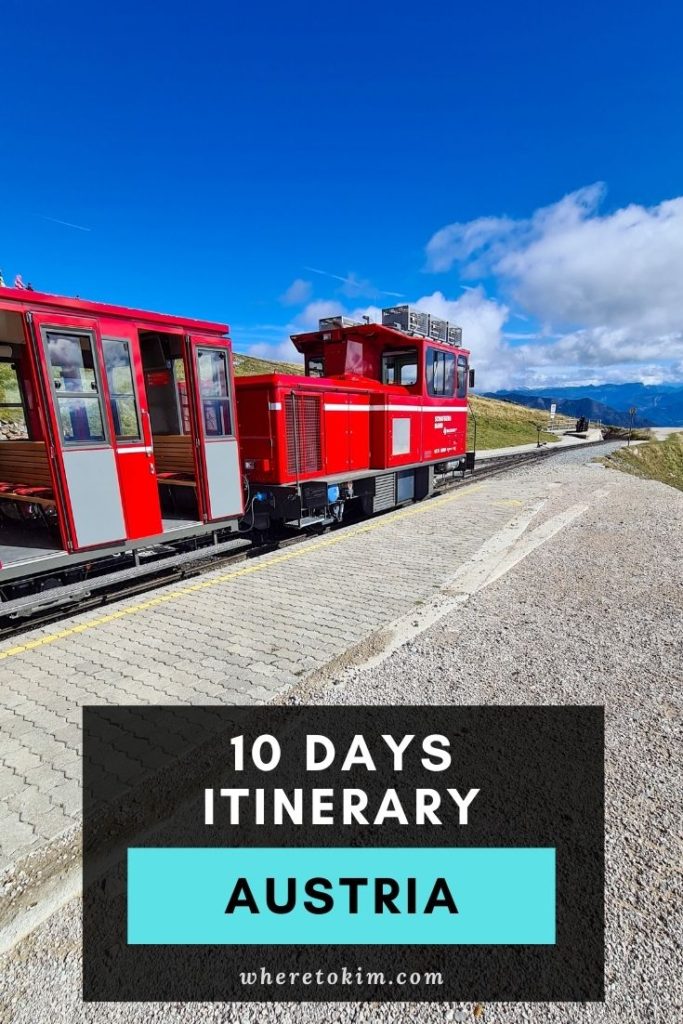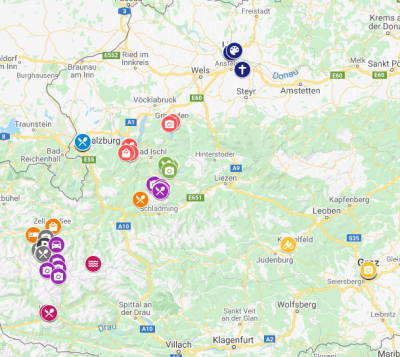Explore the provinces Salzburg and Upper Austria, with some day trips to Styria and Carinthia with this ten days in Austria Itinerary. You will visit the cities, mountains, picturesque towns and see the most beautiful sights.
This Austria itinerary focuses on the middle of the country. You can easily add some days at the end to also visit Austria’s capital Vienna.
For this itinerary, you will need a car. If you don’t have one – and can’t rent one – then you can still use this itinerary as an inspiration because it includes many interesting places. It is possible to visit all of these places using public transport.
Austria Itinerary Summary
Austria Itinerary Map
You can find all places and highlights mentioned in the itinerary in my Austria Google Map.
How to start your trip?
If you’re coming from another country in Europe, you can drive to the starting point of this itinerary: Salzburg.
If you’re arriving in Austria by air, then see if you can fly to Salzburg Airport or Linz Airport, as the first part of this itinerary takes place near these cities. For international flights, Vienna Airport is a likelier destination. If you arrive at Vienna Airport, simply rent a car and head towards Salzburg and Linz. This will take about two and a half hours for Linz and just over three hours for Salzburg. Along the way there is plenty to see and there are many interesting places to visit.
Where to stay in Austria?
While it is possible to move to a new hotel or apartment every few days, I’d recommend to only stay at two places during this trip.
See if you can find an apartment near Bad Ischl, Bad Goisern or Bad Aussee for the first six days. This will put you in between the cities Salzburg, Graz and Linz, so that you can visit all of them with a one to two hour’s drive. Hallstatt, Dachstein Krippenstein and Sankt Wolfgang im Salzkammergut can be reached within half an hour.
Haus Loserblick
I stayed at a beautiful holiday home in Lichtersberg near Altaussee. It is a bit pricey but very comfortable with a sauna and a spacious living room and kitchen. As a bonus: you can go hiking from here and the Loserberg mountain is only one toll road away.
For the second part of the trip, days seven to ten, it is best to stay near Zell am See and Kaprun.
Holiday Home Stocklgut
I stayed in a holiday home in the small village Niedernsill. It was less luxurious than the previous home, but it was spacious and the lady of the house provided us with milk from her own cows every day (paid service) which was nice.
10 Days Austria Itinerary
Click on the links in the day descriptions for more information about the highlights.
Day 1: Salzburg
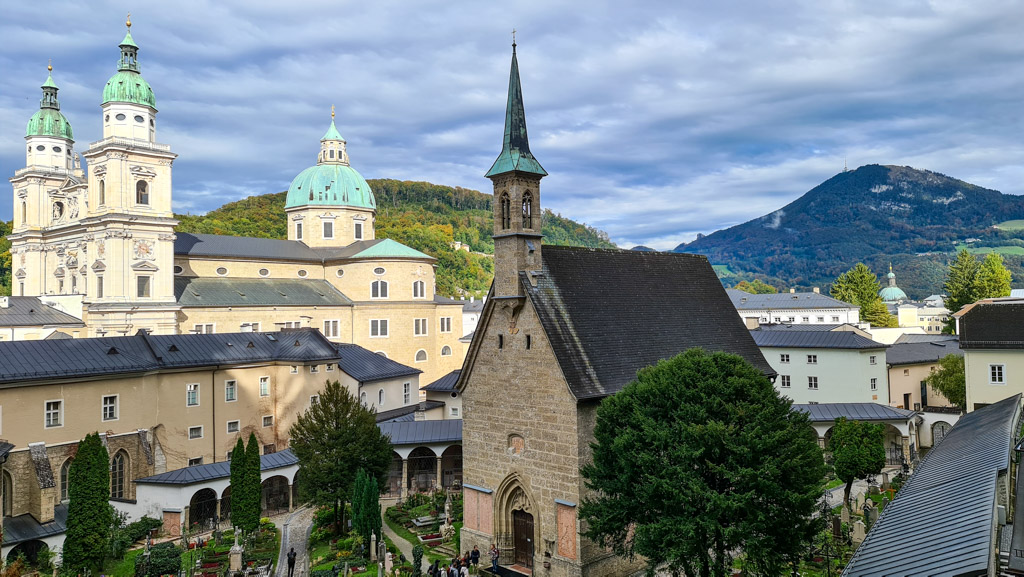
On the first day of your trip you will explore Salzburg. Salzburg is the ideal destination for those who love history and architecture. This is where it happened. From being the location of a Roman settlement, to becoming the seat of the archbishop and the center of the counter-reformation. It is only the fourth biggest city in Austria, but it is thriving. Salzburg’s historic centrum is listed as a UNESCO World Heritage Site and is also the city that Mozart was born in.
Park your car in one of the parking garages on the northeast side of the river. On and around the Linzer Gasse you will find many fun, modern cafes. On this side of the river you can visit the Maribell Palace, Mozart House and the Capuciner Monastery on top of the hill. From this hill you have a great view of the grandiose buildings that stand on the other side of the river.
After crossing the river, take a stroll down Getreidegasse; Salzburg’s touristy and chic shopping street. Its location is no surprise, as this street is very close to the beautiful Dom of Salzburg (Cathedral), many museums and the university. Near the oldest bakery in Salzburg, you can take the castle train up to Hohensalzburg Castle to explore the castle town on top of the hill. From here you have a great view of the buildings on both sides of the river.
Last but not least, after you get back to ground level, you can visit the Petersfriedhof Graveyard and Catacombs; my highlight of the day.
Read more: Things to See in Salzburg
Day 2: Hallstatt & Dachstein
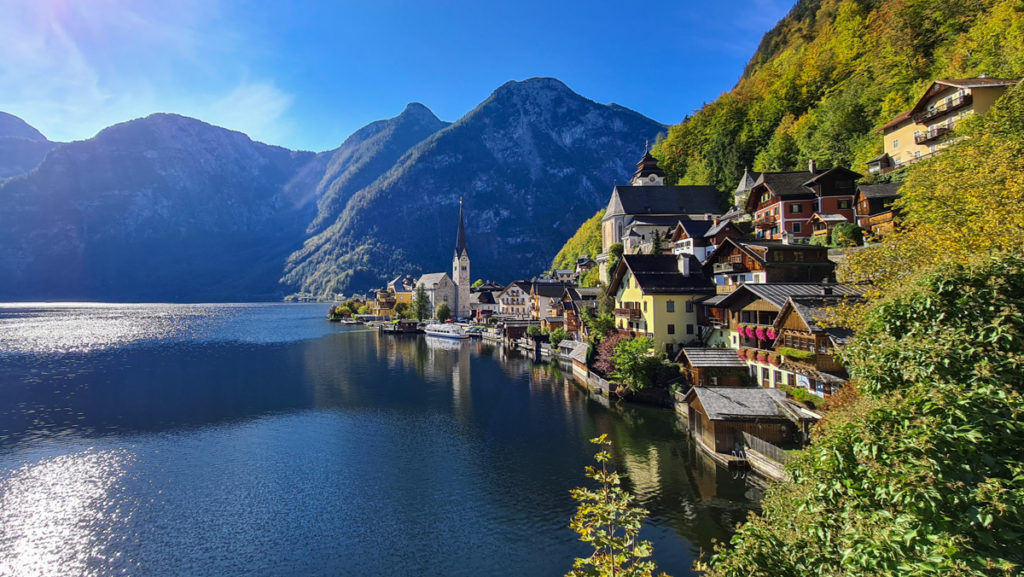
Drive to Hallstatt and park your car at one of the parking lots south of town. Hallstatt is one of the most picturesque towns in Austria. It is charming and has a great panoramic view. At the northern end of the town, you can take a picture of the town and lake against the backdrop of the Dachstein mountains. This is the ‘one and only’ picture that every tourist has to take back home.
The town itself is perfect eye-candy material: beautiful wooden houses – some older than others – built against the mountain, colorful houses near the market square, and a church with an interesting stone wall. Hallstatt deserves its fame.
At Hallstatt, you can also visit Salzwelten on top of the hill; one of the most well-known salt mines in Austria. You can explore the tunnels, learn about salt, and view Hallstatt from above from the viewing platform nearby.
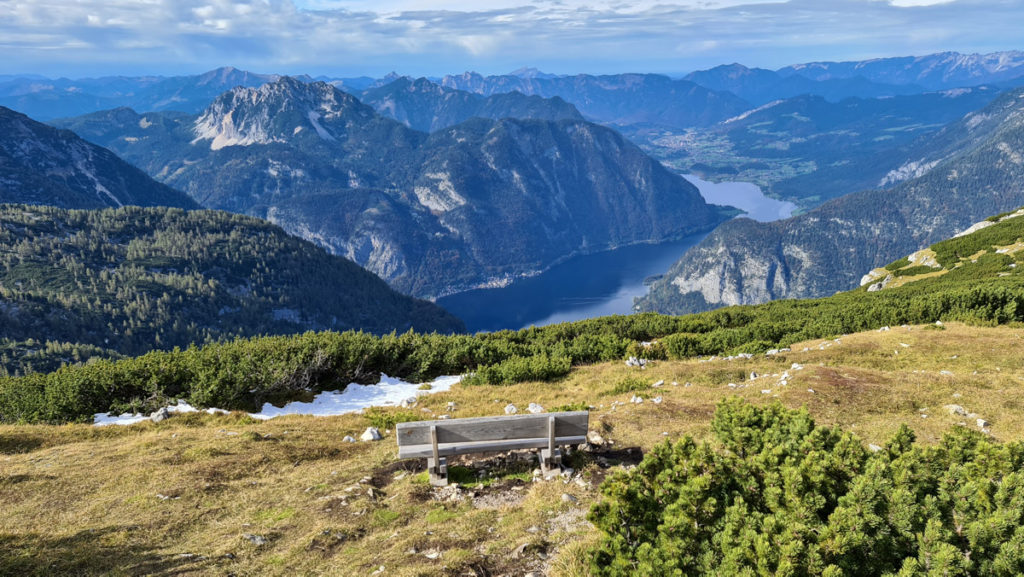
From Hallstatt, you drive in fifteen minutes to the parking lot of the Dachstein cable car station. Dachstein Krippenstein is well-known and loved as a skiing destination, but don’t let that fool you: the Dachstein mountains are a great place to visit in summer as well. (And fortunately, ‘summer’ lasts until November opening time-wise). Visit the Giant Ice Cave and the Mammut Cave and take some great pictures at Dachstein 5fingers and the World Heritage Spiral.
Day 3: Graz
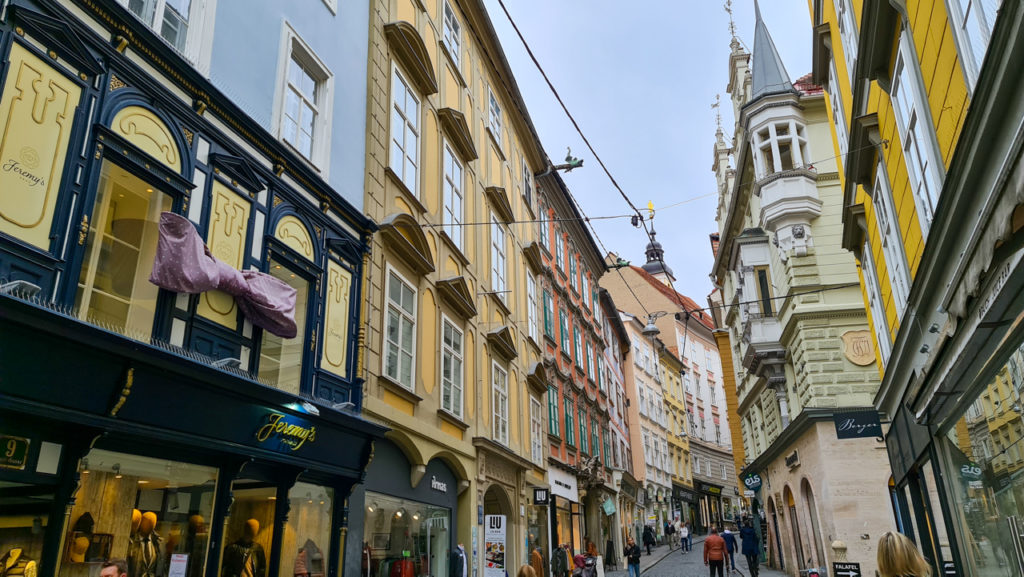
Today’s destination is quite far. Depending on where you are staying it might take around two hours to reach the city of Graz. Graz is the second biggest city in Austria; a university city known for its Old Town that is one of the best-preserved city centers in Europe. You can find Graz in the province of Styria in the south-eastern part of Austria at a two-hour drive from Vienna.
Park your car in one of the many garages (can be very narrow) near the Old Town or the Kunsthaus. From here you can explore the city center on foot. First, head to the Old Town of Graz to see the colorful buildings with various building styles.
Number one of my favorite sites in Graz is the double spiral staircase in the government building near the north-eastern side of the Old Town of Graz. Such interesting architecture giving you the feeling that you can endlessly climb up into the sky. As both stairs meet briefly at every level, only to separate again later, it is no wonder this staircase is called the “staircase of reconciliation”.
Near the double spiral staircase are the Mausoleum of Emperor Ferdinand II and the Dom of Graz. Two imposing buildings with majestic allure next to each other.
A visit to Graz is not complete without climbing the stairs or taking the elevator to the castle overlooking the city. On top of the Schlossberg, you can find some interesting structures like Clock Tower (Uhrturm), the Chinese Pavilion, the Schlossberg stage, and the Gothic Gate. From the viewpoint you can see the intriguing building that houses Kunsthaus Graz.
On the way back home you can make a small detour to visit the Red Bull Ring if you are a fan of motorsports.
Day 4: Sankt Wolfgang & Gmunden
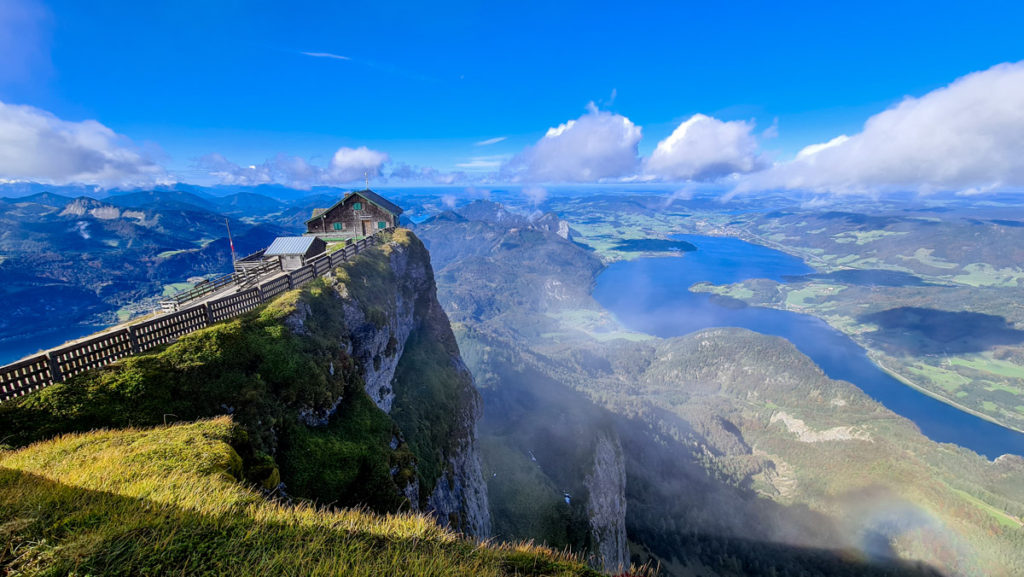
On the fourth day you will visit two nearby towns. Sankt Wolfgang im Salzkammergut is a pleasure to explore. Its colorful housing and shops selling local delicacies and other (winter) products give the town a winter wonderland charm. Even on a sunny day with a blue sky. There’s a shop selling air-dried ham for an afternoon snack and other shops selling everything you could possibly need for a cold winter.
The biggest tourist attraction (but not trap!) is the Schafbergbahn, an old railway track that takes you to the summit of the Schafberg. This railway track – with the bright red train – has been in use since 1893. From the peak of the Schafberg, you have a panoramic view of the Wolfgangsee and the Salzkammergut mountains. I do recommend taking the first ride up the mountain, because that leaves you more time for sightseeing in Gmunden.
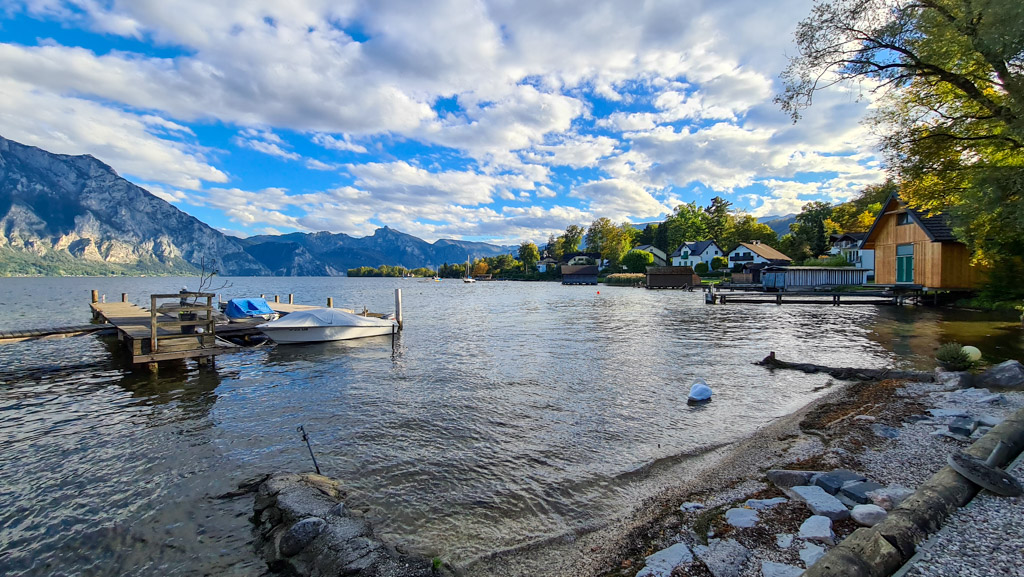
If you are short on time – or just having a great time in Sankt Wolfgang im Salzkammergut – you can also choose to make a short stop in Gmunden on day six or skip the town altogether. I visited Gmunden as one of the much needed breaks on the day I drove from the Netherlands to Austria.
Gmunden is a small town that is best known for the beautiful photos you can take of the lake surrounded by the mountains. On a small island in the lake, connected to the mainland by a bridge, sits Schloss Ort, a small castle that is often used as a film location in movies.
Day 5: Loserberg hike
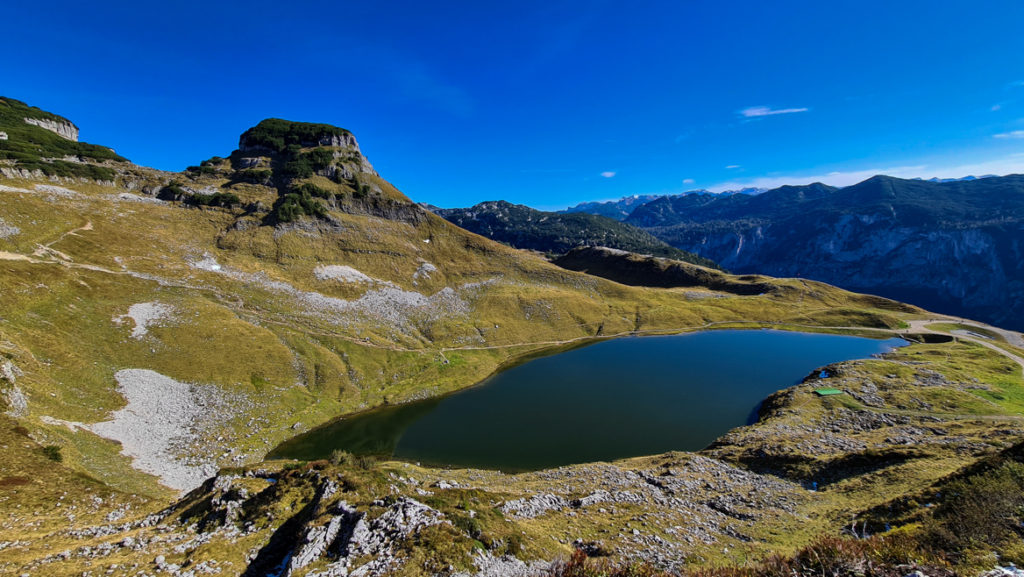
What would a trip to Austria be without hiking?
The Loserberg is an 1838 meters high mountain in Ausseerland in Austria. It is a place that is well-known as a ski resort, but – among tourists – less as a place to go hiking. There are plenty of short and longer hikes available. Some of the shorter hikes can be combined into one long hike and there is also plenty of space to simply wander.
You can start the hike of your liking from the parking lot of the Loser Alm restaurant at 1600 meters. To get there, follow the Loser Panoramastraße; a zigzagging toll road of 9 km from Lichtersberg near Altaussee. If you are looking for a short hike, then the Augstsee roundtrip, the Bräuning Alm roundtrip, and the path to the Loserfenster are perfect for you. For a longer hike, you can continue to the Loserberg summit from the Loserfenster.
After your hike, head to the Blaa Alm for a nice meal at a restaurant surrounded by forest and grass fields with a relaxing outdoor seating area and a playground for kids. You can also explore the nearby town Altaussee and relax near the lake.
Day 6: Linz & St Florian Monastery
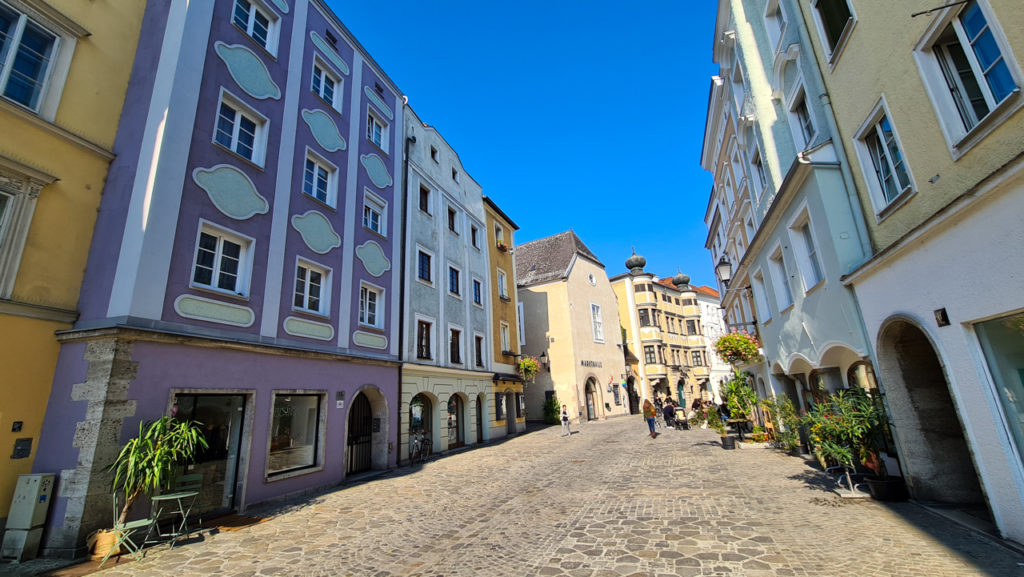
Drive in an hour or so (depending on where you are staying) to Linz, the third biggest city in Austria after Vienna and Graz. The city of Linz is the most important industrial city in Austria. For tourists, it is probably more interesting to know that Linz was named the cultural capital of Europe in 2009. And it shows.
Visit the Old Town to see the Landhaus, Kremsmünstererhaus, Old and New Cathedral and the Trinity Column on the Main Square.
After sightseeing in the Old Town and exploring the beautiful buildings there, it is time to visit something completely different, namely the Mural Harbor of Linz. In this harbor, you will find one of the biggest open-air exhibitions in Europe. Free art and plenty of open space against a unique background all ready for you to explore.
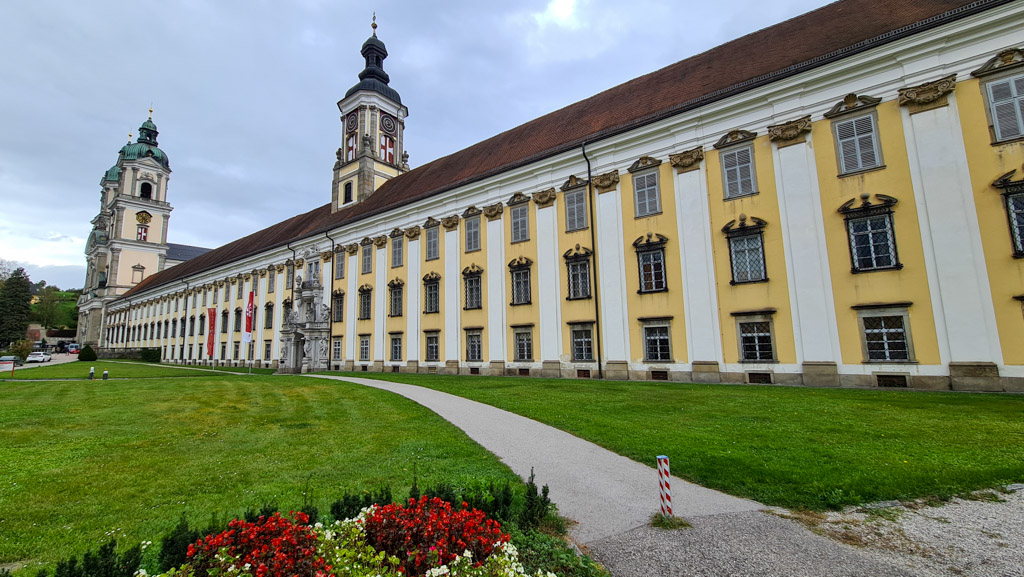
You can combine a visit to Linz with a visit to the St. Florian Monastery nearby. From Linz, you can drive to St. Florian in less than half an hour. St. Florian is the largest monastery in the province of Upper Austria. It was founded in the early ninth century and refounded by the Augustinians in the 11th century.
Day 7: Filzmoos & Zell am See
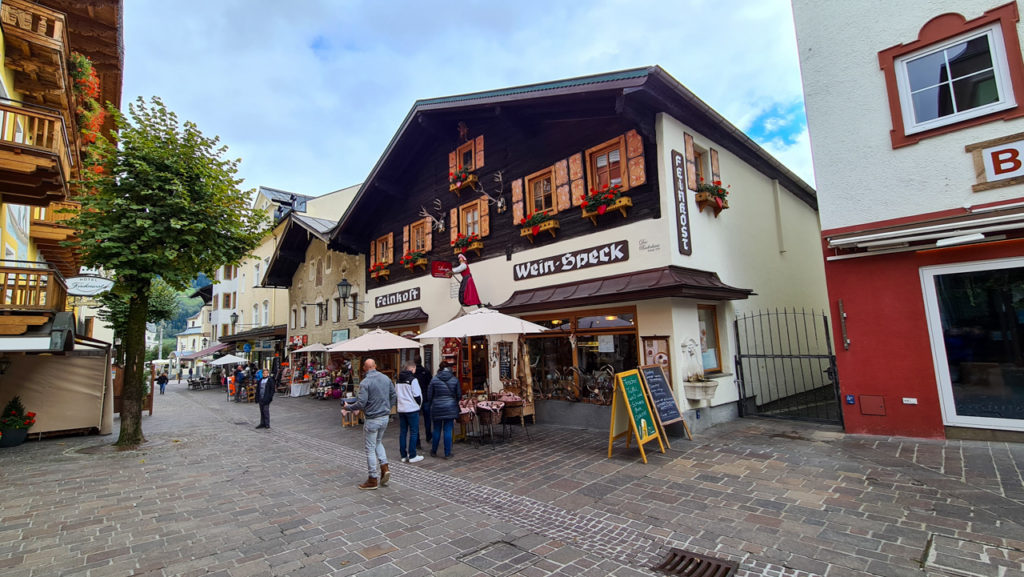
A trip to Austria would also not be complete without a hike (or drive) to a mountain hut and a hearty meal. Look no further: the Oberhofalm near Filzmoos is a perfect example of a mountain hut. Either park your car in the valley and hike to the mountain hut, or pay a small fee for the toll road and park in front of the restaurant. Filzmoos is on route to your next holiday home in the Zell am See / Kaprun area.
The town Zell am See is located next to a large lake that lends itself perfectly to all kinds of water sports activities. Zell am See is a bustling town in high season, but blissfully – ghostlike – quiet in low season. Wander the streets and go shopping at the clothing stores and shops selling local delicacies or have a drink in a restaurant or cafe. In winter, this town is a perfect base for skiing in the area, for example on the Kitzsteinhorn.
Day 8: Gipfelwelt 3000 & Sigmund Thun Klamm
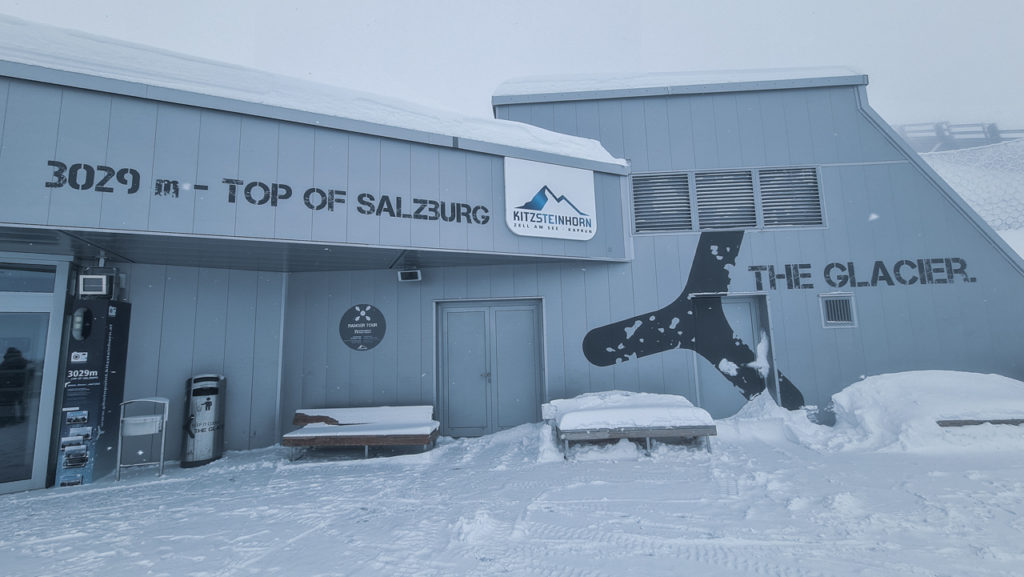
Head to the Kitzsteinhorn cable car station to take the glacier jets to the panorama platform Gipfelwelt 3000. From the ‘Top of Salzburg’ you have a great view of the alps, especially in summer when it is not snowing. At the top you’ll also find a small alpine museum and a restaurant with a view. For the ski enthusiasts among you: on the Kitzsteinhorn you can often ski as early as October.
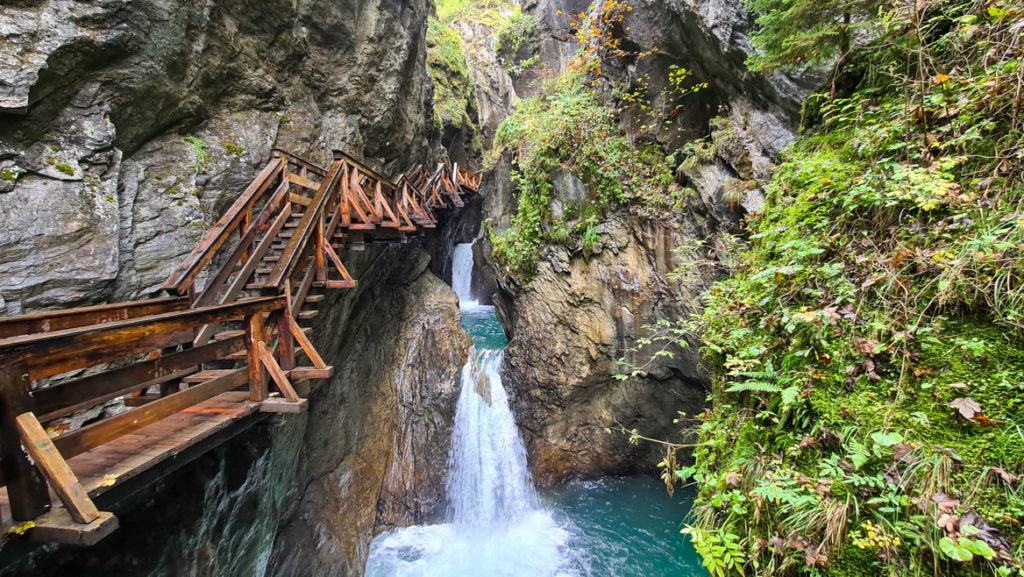
If you have some time left after your visit to Gipfelwelt 3000, you can head to the Sigmund Thun Klamm; a naturally shaped gorge with water that flows beautifully. You pass the entrance of this gorge on your way back to Kaprun.
Alternative: Stausee
You can also choose to visit the Stausee on this day if you prefer a warmer destination that is better suited for hiking. To get to the Stausee, you drive past the Kitzsteinhorn valley station towards Bergrestaurant Mooserboden, a restaurant located next to the alpine lake Stausee Mooserboden. In this area you can go for a walk, hike the herb trail and have a meal at the restaurant.
The Stausee can only be visited during the summer season (until mid-October). Do pay attention to the interactive information board on the 168 road near Kaprun to see if the road to the Stausee is open. If there is an avalanche warning, you cannot visit the lake. If the road is open, you can park at Kaprun Stauseen Parkhaus and take the shuttle bus from there.
Day 9: Lienz or Bad Gastein
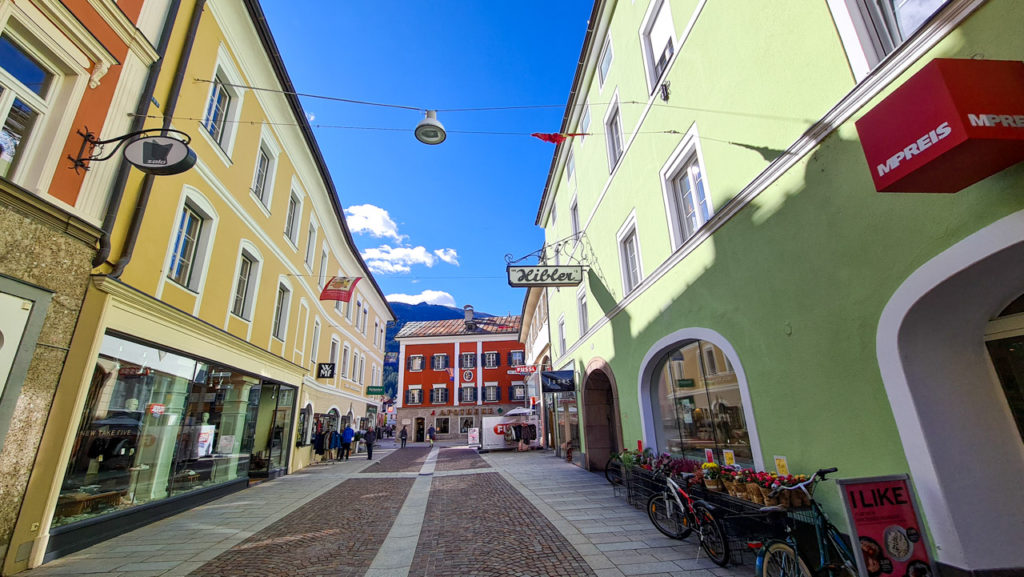
Lienz and Bad Gastein are your alternative options if the weather is bad on one of the other days. So feel free to move another day’s activities to day nine if needed.
Lienz is a city with a colorful city center that often has great weather. If the weather isn’t great around Zell am See and Kaprun, then head to Lienz, a town south of the Grossglockner mountain. From Kaprun, it is about an hour and a half drive to Lienz, either through the Felbertauern Tunnel or by crossing the Grossglockner Hochalpenstraße (closer to two hours).
In Lienz you can relax in the colorful city center and see Schloss Liebburg, the Antonius Church, an Old Smithy and the Old City Wall and Tower. Outside of the city center you can pay a visit to Schloss Bruck, a castle built on top of the hill dating back to the 13th century.
Alternative: Bad Gastein
Are you looking for a relaxing day? Then head to Bad Gastein, an area full of wellness resorts. Spend your day relaxing in the saunas and thermal baths surrounded by the alps.
Day 10: Grossglockner High Alpine Road
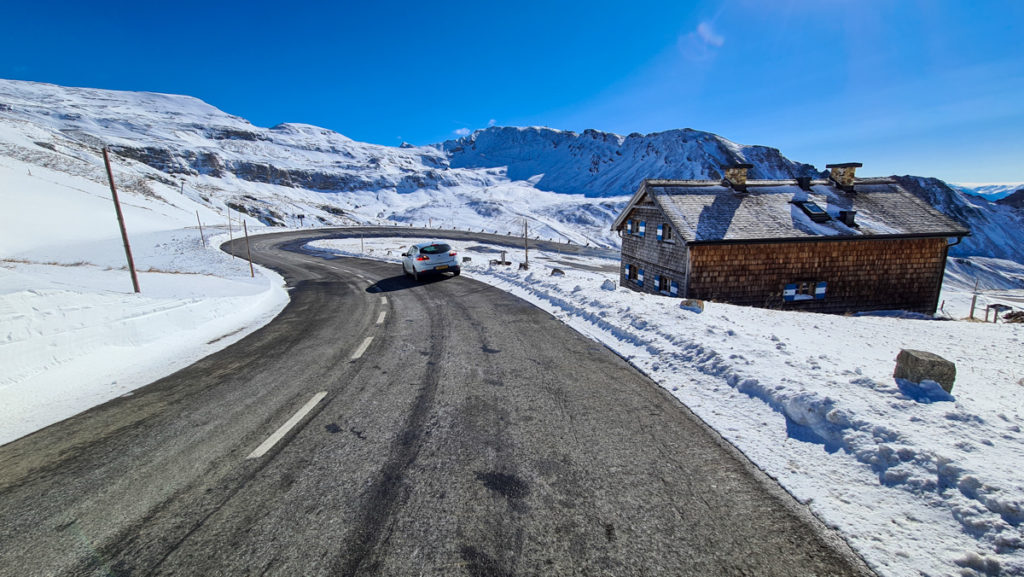
Today is the last day of your roundtrip, so let’s end the trip properly with a scenic drive. The Grossglockner High Alpine Road is the highest surfaced mountain pass in Austria: a zigzagging road with amazing views. Go on a road trip and see the beautiful alpine landscape from the car and the many sights and viewpoints, such as the Fuscher Törl Memorial, Edelweißspitze, Hochtor and the Kaiser-Franz-Josefs-Höhe.
When you reach the end of the Grossglockner High Alpine Road you come upon the village Heiligenblut. Heiligenblut is advertised as a beautiful, charming, and picturesque village. Picturesque, sure, though no more than Hallstatt or Sankt Wolfgang im Salzkammergut. Charming? No. Not in October when all the restaurants are closed or under construction. Heiligenblut is only worth a visit in the high season.
On the other hand, as it only takes five to ten minutes to see the village, there is no reason to skip it either. Snap your perfect picture of the Gothic church with the Grossglockner mountains in the background as a souvenir.
From Heiligenblut, you take the Grossglockner High Alpine Road back to where you came from.
You’ve reached the end of this Austria itinerary. If you can spend more time in Austria, then you can continue your trip in or near Vienna or in the west of the country.
